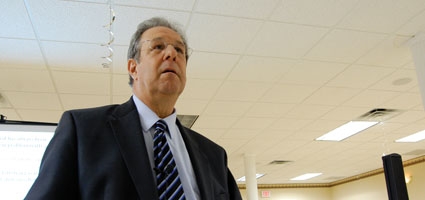No excuse for continued inequity in regards to school’s state aid, according to financial expert
NORWICH – The Chenango County School Boards Association met Thursday for its annual fall dinner, which featured a presentation by Dr. Rick Timbs of the East Syracuse Statewide School Finance Consortium.
Unadilla Valley Board of Education member Sandy Cooper introduced Timbs, the retired district superintendent of the Erie 2 – Chautauqua-Cattaraugus BOCES in western New York, which is comprised of 27 school districts serving approximately 45,000 students. As such, Timbs has served as a representative of the Commissioner of Education and “was often asked to address educational, institutional and financial issues in school districts statewide,” said Cooper.
Timbs’ two-hour presentation included detailed information on inequities in the state’s educational aid formula and cuts over the past two years that have severely impacted low and average wealth school districts across the state. The distribution of state aid, according to the former superintendent, athletic director, principal, educator and union president, could be altered in such a way that it would be much less harmful to those districts.
Said Timbs, “This could be changed if someone would just do it.”
Low and average wealth districts have been forced – due to cuts in state aid – to drastically reduce staff and dip into their fund balance, stated Timbs, and districts such as those that comprise the DCMO BOCES region are “running out of both.” If these conditions continue, he added, the quality of education offered will suffer.







Comments